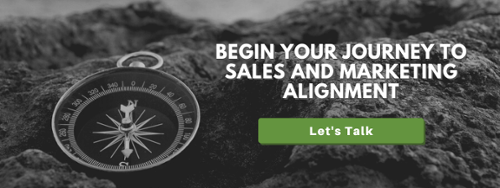If your sales department feels like it’s on a constant roller coaster with ups and downs, twists and turns, and an unpredictable route, chances are they’re pretty stressed out much of the time. Maybe it’s time to think about ways to smooth out the ride.
There are three primary elements to address:
-
Developing sales cycle stages
In this blog we’ll look at that third element: developing sales stages to define your sales cycle.
Editor’s note: This blog was updated in April 2021 for accuracy and comprehensiveness

Where to start
This process is all about answering questions about your prospects and customers. How do people buy from you? What are the stages they go through during the buying process? What do you need to know to help them? The more detailed your answers, the better you can tune in your stages to the B2B buyer journey, and the better your odds of success.
Very often, we use identifiers such as hot, warm, or cold when we put a forecast or sales pipeline in place. But what do these mean? They certainly aren't actual stages – they’re highly subjective words that reflect how we feel an opportunity might go. They aren’t measured against any data or facts and they give you no numerical validation or timelines for meaningful forecasts.
To build a measurable, predictable sales pipeline, use strategic stages that are objective and have distinct definitions (and that you hold yourself accountable to). Further, it’s critical that each member of the sales team agrees on the definitions and uses the stages to track their work. If each person uses a different unit of measure, results and forecasting will be all over the place – back to the roller coaster!
Sample stages
Sales stages will vary depending on your business needs and the patterns and trends you’ve uncovered in buying behavior for your prospects’ industry.
Here’s an example of what you might come up with once you understand how your customers buy. By following stages like these, or ones you come up with on your own, you can more easily advance them through the cycle and end up with a sale:
-
Stage 0: Prospect! This encompasses all the ways you connect with potential buyers: outreach, digital marketing, calling campaigns, inbound marketing, email campaigns, trade shows, webinars, etc.
-
Stage 1: Identify that prospect’s problem. Based on your conversation with the prospect and market research, what specific problem do they have? Do they have an idea of what might fix it? Make a connection between what you offer and how it can help them.
-
Stage 2: Identify how the problem impacts the prospect’s business. Try to determine how financially painful is this problem for them. What other issues do they face because of the problem (e.g. loss of market share, potential liability)?
-
Stage 3: Verify that the prospect is ready to buy and financially committed to solving that problem. This can be a tough one to determine accurately. While you don’t want to waste time with a prospect who’s really “just looking,” you do need to keep them in your database for future check ins and regular nurturing. Watch for signs that they’re serious about making a financial commitment:
-
Do they have a buying committee in place?
-
Who are the decision makers and can you reach them?
-
Is anyone willing to talk to you about their specific requirements, timeline, and maybe even budget?
-
Will they share who else they’re considering for a solution?
-
-
Stage 4: Understand the prospect’s selection criteria and present a solution. Create a proposal that is tailored to their situation and needs. Don’t forget to address how it solves the problem!
-
Stage 5: Obtain an official commitment. In other words, get a signature on that contract and a PO.
Notice that each of these is distinct and requires you to gather progressively more information about the prospect. Defined advancement criteria means you have an actionable guide and can categorize prospects accurately. If your stages are fuzzy, your forecast will be too.
A note on nurturing
Advancing a prospect through each stage of your buying cycle requires you to do research on their situation, their company, their industry, and a lot of nurturing. This is not the time to let them forget who you are, what you offer, and what your product can do for their situation.
It’s hard to overstate how important this is! Nurturing is not a separate stage - you should be doing this all the time at every stage! Sales is about building a relationship and part of that is responding to inquiries or being the first among your competitors to check in. Build nurturing in at every stage by deciding on a schedule for follow up and then stick to it.
Take some time before your next sales meeting to think about the stages in your sales cycle – review what you have to see how it’s going or start drafting your definitions if you don’t have actual stages in place. If you run into questions along the way, please contact us!







Comments